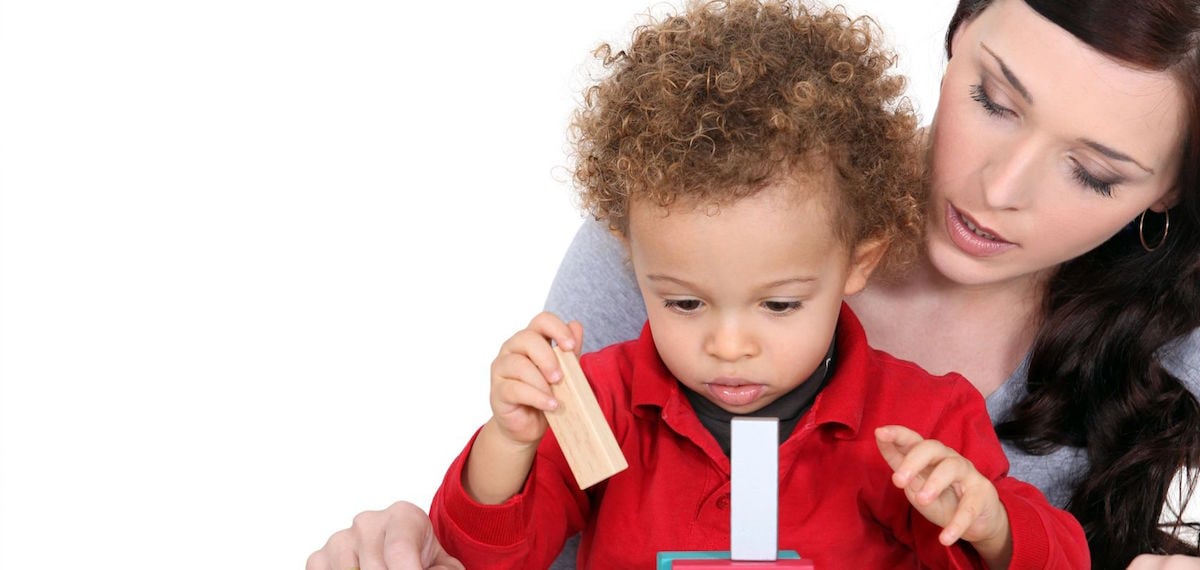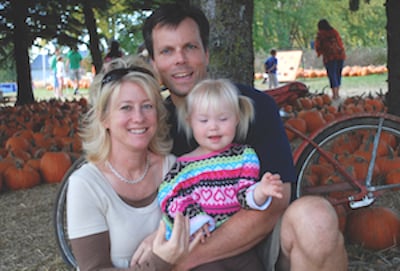
Natural Environments
Print Version
Natural Environments Support Early Intervention Services
All young children tend to thrive when they’re in familiar surroundings and with the people and objects that are most dear to them. For young children with disabilities, those reassuring surroundings are an essential part of their early intervention services. Called “natural environments,” they’re where children can practice new skills and reap the full benefits of professional intervention services.
Natural environments are more than people, places, and objects. They’re an essential part of your child’s right to inclusive early childhood special education services under Part C of the federal Individuals with Disabilities Education Act (IDEA).
Many parents wonder what natural environments are, how they can help their child, and what role the parent plays. Here are answers to some common questions.
What is a Natural Environment?
A natural environment is any place your child and family live, learn, and play. It includes:
- Settings, such as your home, backyard, or place of work. Settings also include places such as a child-care site, relative’s home, park, grocery store, or library.
- Materials, which can be anything found in your child’s physical environment— toys, rocks, books, swings, grass, spoons, a high chair, or a favorite wagon.
- People, such as parents, siblings, relatives, friends, neighbors, teachers, or anyone else with whom your child might interact.
- Activities that incorporate the interests and routines of your child and family. These might be daily activities such as eating, bathing, and dressing; recreation such as playing, reading, walking, camping, swimming, and going to the playground; and community participation such as going to worship, celebrating holidays, taking part in cultural practices, going to the grocery store, and riding in different forms of transportation.
Why are Natural Environments Important?
Natural environments make every moment of your child’s day an opportunity for inclusion and for developing new skills. That’s important because when children are engaged in activities and playing with objects in which they are interested, they learn best. Natural environments help your child model the behavior and skills of family and peers. They also make it more comfortable for your child and family to practice new skills to determine what does and does not work.
What Law Supports Natural Environments?
The idea of using natural environments comes straight from Part C of IDEA. The law says:
- “Early intervention services must be provided in natural environments, including the home and community settings in which children without disabilities participate, to the maximum extent that is appropriate.” (Sec. 303.12)
- “[Natural environments are] those settings that are natural or normal for the child’s age peers who have no disabilities.” (Sec. 303.18)
What Role Do Parents and the Individualized Family Service Plan (IFSP) Team Play?
Through the development of the IFSP, the team must provide individualized services that meet the unique needs of your family and your child with disabilities. Deciding on what those services should be and where they should be provided is a key role of the team, which includes the parents.
As a parent and IFSP team member, you will be asked to identify the natural environments for your child. The team may help you explore other natural environments in your community as well.
A Natural Part of Growing Up
2011

At just 2 1/2 years old, Piper Cooke has already received physical therapy for her gross motor development, speech therapy for her language and communication skills, and occupational therapy for her sensory development and muscle strength. Piper’s interventions also come from basic day-today interactions, such as mealtimes with her parents or playtime with the other children at her childcare.
Piper, who was born with Down syndrome, is receiving many of the services through her Individualized Family Service Plan (IFSP) both at home and in daycare. These places qualify as natural environments, defined as “settings that are natural or normal for the child’s age peers who have no disabilities” by the Individuals with Disabilities Education Act (IDEA).
Piper’s mother, Suzette Oltmanns, tries to have Piper’s IFSP services provided in natural environments whenever possible, because it’s important for her that Piper “be treated just like any other child,” she says. Until Piper was born, Suzette and her husband, Kyle Cooke, had no idea she had Down syndrome. The two had to undergo a “crash course” in the disability almost immediately so they could learn what to expect and how to advocate for their daughter. Although it was a scary time, the two parents promised early on to raise Piper like any other child. With that in mind, last spring Kyle and Suzette enrolled Piper in a neighborhood childcare setting with several other children. Only one of the other children has a disability, which means Piper has countless opportunities to interact with typically developing peers her own age. Suzette says these interactions prove invaluable to her overall development.
“Her service coordinator has commented repeatedly on the growth Piper’s had since last May, when we started sending her there,” Suzette says.
This growth is evident in all areas, including her social skills and interactions. Because Piper is an only child, it helps her to have other children she can play with. “These kids have accepted Piper just like a brother or sister,” Suzette says. “Everybody is so accepting there. Nobody judges her or treats her differently.”
In addition to the social skills she learns at daycare, this environment also helps Piper with her physical progress. Before Piper started attending childcare three to five days a week, she could only walk with the help of a push toy that she used around the house. Within a week of attending childcare, the push toy was gone and Piper was walking all on her own – an accomplishment Suzette attributes to the motivation Piper gets when she sees other children doing something she can’t.
“She wants to do everything the other kids are doing,” Suzette says. “These kids help her so much and push her to do more.”
The same is true with Piper’s communication and language development. At 2 years old, Piper can already use and understand more than 60 signs. Still, she has a hard time speaking words out loud. Suzette and Piper work on talking at home, but when Piper’s at childcare, she has the opportunity to communicate with her friends. Those children encourage her and help her try to form words. “They really help her and support her,” Suzette says.
The What’s and Where’s of Natural Environments
Services in natural environments can help children with disabilities grow, develop and thrive, just like Piper. Under IDEA, all children with disabilities and their families have the right to receive services in natural environments, which include the typical routines, activities, events and settings of everyday life. Simply put, a natural environment is everywhere your child goes, everyone your child knows and everything your child does. This definition includes:
- Settings, such as your home, backyard or workplace. Settings also include places such as a childcare site, relative’s home, park, grocery store or library.
- Materials, which can be anything found in your child’s physical environment— toys, rocks, books, swings, grass, spoons, a high chair or a favorite wagon.
- People, such as parents, siblings, relatives, friends, neighbors, teachers or anyone else with whom your child might interact.
- Activities that incorporate the interests and routines of your child and family. These might be daily activities, such as eating, bathing or dressing; recreational activities, such as playing, reading, walking, camping, swimming or going to the playground; or community participation, such as going to worship, celebrating holidays, taking part in cultural practices, going to the grocery store or riding in different forms of transportation.
Typically, services in natural environments for children under 3 years are provided in the home or childcare setting. Your IFSP team can help you identify natural environments, tailor services to you and your family, and make sure your choices support the goals and outcomes you have identified in your child’s IFSP. As a parent, you play a key role in helping the team understand the locations and activities that are important to your family. “As a parent, you are the expert on your child’s needs and interests,” says Judy Swett, PACER Center’s early childhood coordinator. “You take on the role of your child’s first teacher and are able to provide multiple opportunities throughout the day to work on needed skills.”
Why Natural Environments?
Providing a child with a disability with services in natural environments is beneficial not only for the child, but for parents, professionals and even the community. Research has repeatedly shown that children learn and succeed most in natural situations and environments. In addition, services in natural environments:
- Promote a child’s development, learning and participation in family and community life.
- Expand a child’s opportunities to experience and practice new skills.
- Encourage interaction and inclusion with others.
- Offer a child the same opportunities and activities as typically developing peers.
- Help a child learn appropriate social skills.
- Instill confidence in the parents’ abilities to meet their child’s needs at home and in the community.
- Raise the community’s awareness of disabilities and special needs.
Most importantly, providing a child with services in natural environments can bring families even closer together. “Early intervention services in natural environments are not about turning parents into therapists,” Swett says. “It is a recognition of the vital role that parents play in their child’s development and confirmation of all the great things they are already doing.”
Reaching Goals – Naturally
Kyle and Suzette know the benefits that services in natural environments can bring. Over the past few months, they’ve watched their daughter learn and accomplish more than they would have thought possible at her young age. More importantly, they feel that providing Piper with services in natural environments has helped them achieve their goal of raising her just like any other child.
“I’m so grateful for the environment that we’ve found for Piper here,” she says. “It’s opened up a whole new world for her.”
Natural Environments Promote Learning

Children with disabilities or developmental delays are, above all else, children. Th ey need love, family, friends, support, new experiences, education, and fun just like any other child in order to grow into their full potential. As they go about their playing and learning and striving and growing, they belong in the same places all children do—parks, playgrounds, pools, stores, libraries, museums, birthday parties, and more.
It’s no different when a young child is receiving early intervention services. Speech, occupational, and physical therapy, for example, oft en can be provided in the natural flow of a child’s life.
In fact, the Individuals with Disabilities Education Act (IDEA) says that early intervention services must be provided in natural environments to the maximum extent appropriate. “Natural environments” are any place your family and child live, learn, and play—including your home and community settings where children without disabilities would typically be found. In other words, depending on your child’s needs, services can take place at the park, in child care, or splashing in the community pool.
Your Individualized Family Service Plan (IFSP) team can help you identify natural environments, tailor services to you and your family, and make sure those choices support the goals and outcomes you have identified in the IFSP. You play a key role in helping the team understand the locations and activities that are important in your family’s life.
One way to start is by realizing how many places are considered natural environments. Your home, of course, is an obvious one. Did you know that the homes of nearby relatives also are natural environments? So are your backyard, the grocery store, and public places such as the library. Natural environments aren’t just places. Th ey also include the objects your child finds in everyday life, from toys, rocks, books, and swings to grass, spoons, a hairbrush, or a wagon. All can be teaching tools that support IFSP goals.
Even the people in your child’s world are defined as part of the natural environment. That might include you, siblings, grandparents, aunts, uncles, cousins, friends, neighbors, or elders.
Activities and routines are also considered part of the natural environment. Eating, bathing, dressing, playing, reading, walking, camping, swimming, going to the grocery store, riding in different forms of transportation, celebrating, and participating in other cultural practices are all opportunities to learn. These routine activities can easily be incorporated into early intervention services.
In other words, the natural environment is everywhere your child goes, everyone your child knows, and everything your child does. All of it can be brought into play when early intervention services are provided. By working with early childhood professionals and learning how to integrate services into your child’s everyday life, you help promote his or her development, learning, and participation in family and community life.
Using natural environments has other benefits, too. For starters, it gives your child many chances every day to practice the new skills he or she is learning. It also promotes inclusion with others and means that your child is offered the same opportunities and activities as typically developing peers. What’s more, you can feel more confident in your ability to meet your child’s needs at home and within your community.
As you think about your child’s natural environments, keep in mind that there’s no “right” place or method for providing services. Every child, family, and community is unique, and what works for one may not work for another. You, your IFSP team, and your service providers can be flexible and creative when designing early intervention services for your child and family. Your service coordinator, for example, can suggest ways to involve your child in community activities that you may not have considered possible.
Keep your eyes open for opportunities to promote your child’s learning and skills. Natural environments are everywhere your child and family are!
Be an Advocate for Your Child
Receiving early intervention services in natural environments benefits both your child and your family. To make sure your child has every opportunity to learn at home and in the community, you may need to speak up for your child’s needs.
Make sure your Individualized Family Service Plan (IFSP) team knows you want services delivered in natural environments. Does your son spend time in child care? Ask the physical therapist to work with him there. Want to participate in the library’s story hour? Ask the speech pathologist to come along. Are mealtimes a struggle? Ask the occupational therapist to come at lunchtime rather than between meals when your child isn’t hungry.
You also may want to take opportunities in your community to advocate for accessible, inclusive access. If your local playground doesn’t accommodate wheelchairs, for example, you could ask the park to add inclusive equipment next time they upgrade.
